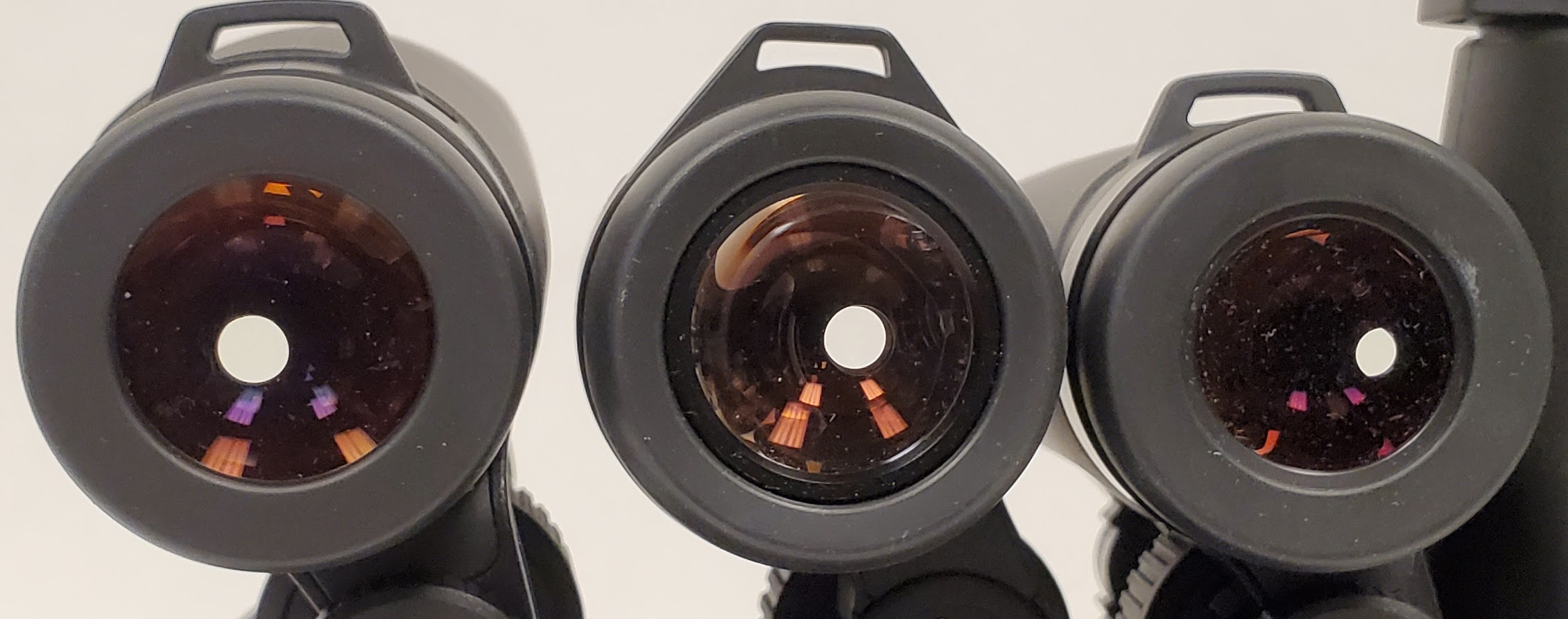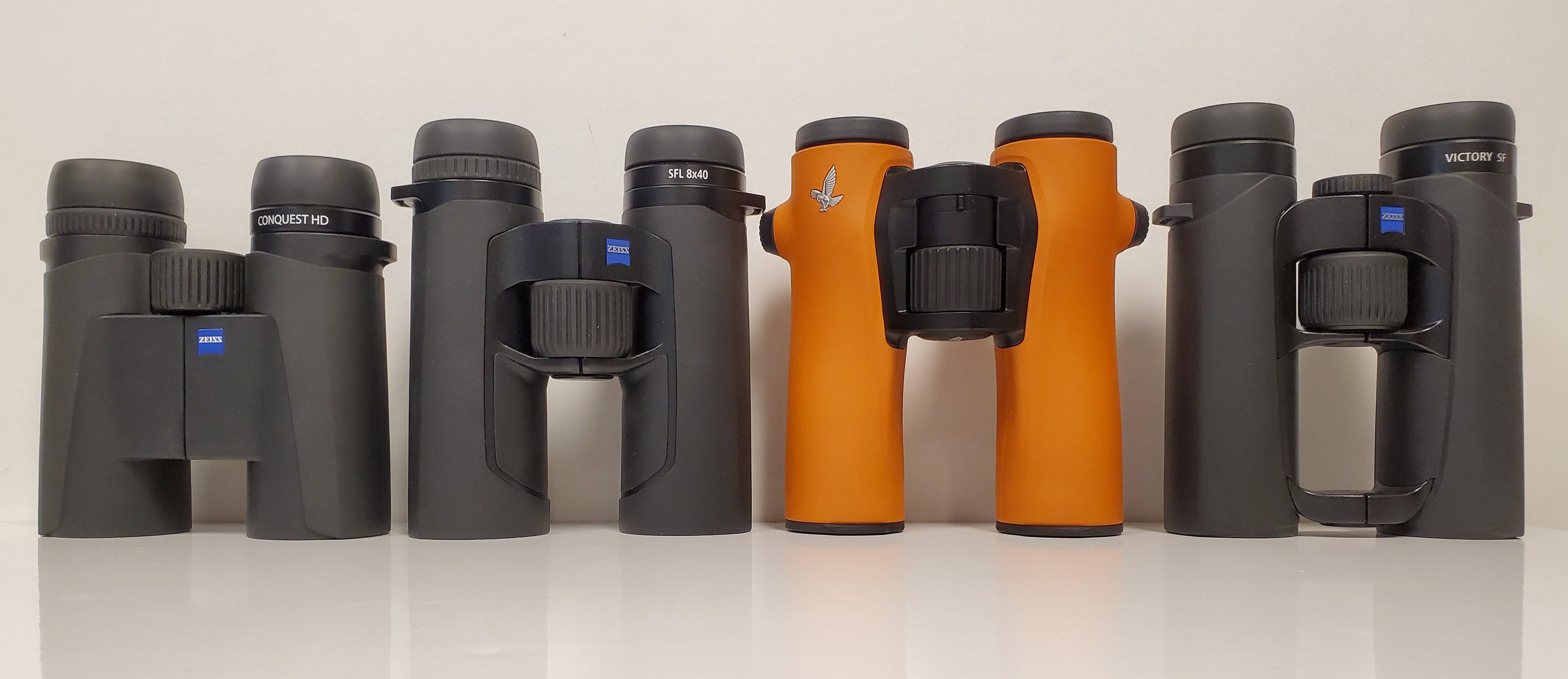A buzz of excitement surrounded Zeiss's announcement in early 2022 about the launch of two new binoculars, the 8x40 and 10x40 Zeiss Victory SFL. Much attention seemed to be on the $1799 price point, inelegantly dubbed "the upper mid-premium segment". Simply put, this means over $1,000 but substantially less than the $2200 to $3200 level of the world's top-shelf binoculars. At present, this price range is populated mostly by large objective, higher-powered binoculars, ranging from 8.5x44 to 20x70, and often used in shooting sports, astronomy, and specialty birding. Some are over two pounds, which eliminates a large majority of the birding market. The $1000 price point represents at least the third tier in binocular quality, and most users get there in steps. So, while $1799 is $1000 to $1500 less than the flagship models, we wondered whether buyers would make the $800 leap from a pair costing $1,000, or whether some buyers who were considering the premier level would choose the SFL instead. A year later, it seems to have been a mix of both outcomes.
Getting back to the optics, many who come to CMBO's Northwood Center to "try before they buy" love the compactness, light weight, and easy-in-the-hand ergonomics of 32 mm binoculars. Include me in that group! And some will buy them for those reasons. But many more (including yours truly) will walk out the door with a 42 mm glass. Why? Exit pupil diameter is calculated by objective diameter divided by magnification (e.g. 42/8 = 5.25 mm). And the 5.25 mm exit pupil of an 8x42 has an area 72% greater than that of an 8x32. That big exit pupil comfortably covers your own pupil, bigger is brighter, and brighter is better. We sell three-and-a-half times more 42 mm binoculars than 32 mm, and I don't expect that to change.

(Above, exit pupils of an 8x42, 8x40 SFL, and an 8x32. And yes, I should clean those lenses!)
As illustrated above, the exit pupil of the 8x40 SF L has 90% of the area of an 8x42 compared to only 58% for a 32 mm. The SFLs do not use Schott HT glass, so they will not equal the low-light performance of the Victory SF, Victory HT, Leica Ultravid HD+, Leica Noctivid, or Swarovski NL Pure. However, objective diameter is a far greater determinant of brightness than a one-to-three-percent increase in light transmission by superior coatings or glass, so for many users that's a pre-sunrise, post-sunset quibble.
Currently, the only apparent direct competition for the Zeiss Victory SFL's is Leica's reissued "Trinovid Classic"* binoculars in 7x35, 8x40 and 10x40. The 8x40 Trinovid Classic is certainly an elegant glass; it has been updated with twist-up eyecups, and is almost exactly the same weight, width, and height as the Victory SFL. However, Leica's focus was on reissuing a stylish classic; the close focus is a rather dated 18 feet instead of the SFL's 4.9 feet, and the Trinovid Classic is "splash proof" but not waterproof. The Zeiss Victory SFLs are "retro" only in the 40 mm objective size; otherwise it is a wholly new glass, being waterproof and with a modern wide field, generous eye relief, and close focus.
And as noted above, the buzz about the Zeiss SFL (which stands for "SmartFocus and Lightweight") is not only that they are priced between the $1,000 level and flagship model prices, but that they are between a 32 mm and a 42 mm binocular in objective size. Clearly, the goal was to retain (most of) the brightness of the class-leading 42 mm binoculars, but with the ergonomics of a 32 mm glass. How well did they do?

(Above: Zeiss Conquest HD 8x32, Zeiss Victory SFL 8x40, Swarovski NL Pure 8x32, Zeiss Victory SF 8x32)
The Victory SFL very closely approach the ergonomics of a 32 mm roof prism. Both SFLs are a negligible 1.43 ounce heavier than the 8x32 Victory SF, yet are 5.3 ounces lighter - a full third of a pound - than the 8x42 Victory SF. And both SFLs are actually a fifth of an inch shorter than the 32 mm SFs. In terms of optical performance, the SFLs are noticeably brighter than their 32 mm equivalents, as well as providing even most eyeglass-wearers with a wide, comfortable subjective field of view.
Postscript: In spring of 2023 Zeiss premiered the 8x30 and 10x30 SFL. With the same 54 mm minimum IPD and 18 mm of eye relief as the 40 mm SFLs, even eyeglass wearers can see the full field of view (which is very generous). At barely over one pound, they are also 6.4 ounces (0.4 pound) lighter than the already lightweight 8x40 SFL! At the 4.9' close focus, I can see the pixels on my 24" work monitor, so this glass should not only excel for feeder-watching but also be great for butterfly and dragonfly observations.
In summary, if your arms or hands literally ache for something smaller and lighter yet you're reluctant to lose the brightness of a 42 mm-class binocular, then the Zeiss Victory SFL series offers four new optics to challenge the existing paradigm!

(Above, Zeiss Victory SFL 8x40, Victory SF 8x32, Victory SF 8x42 at maximum IPD or width)
